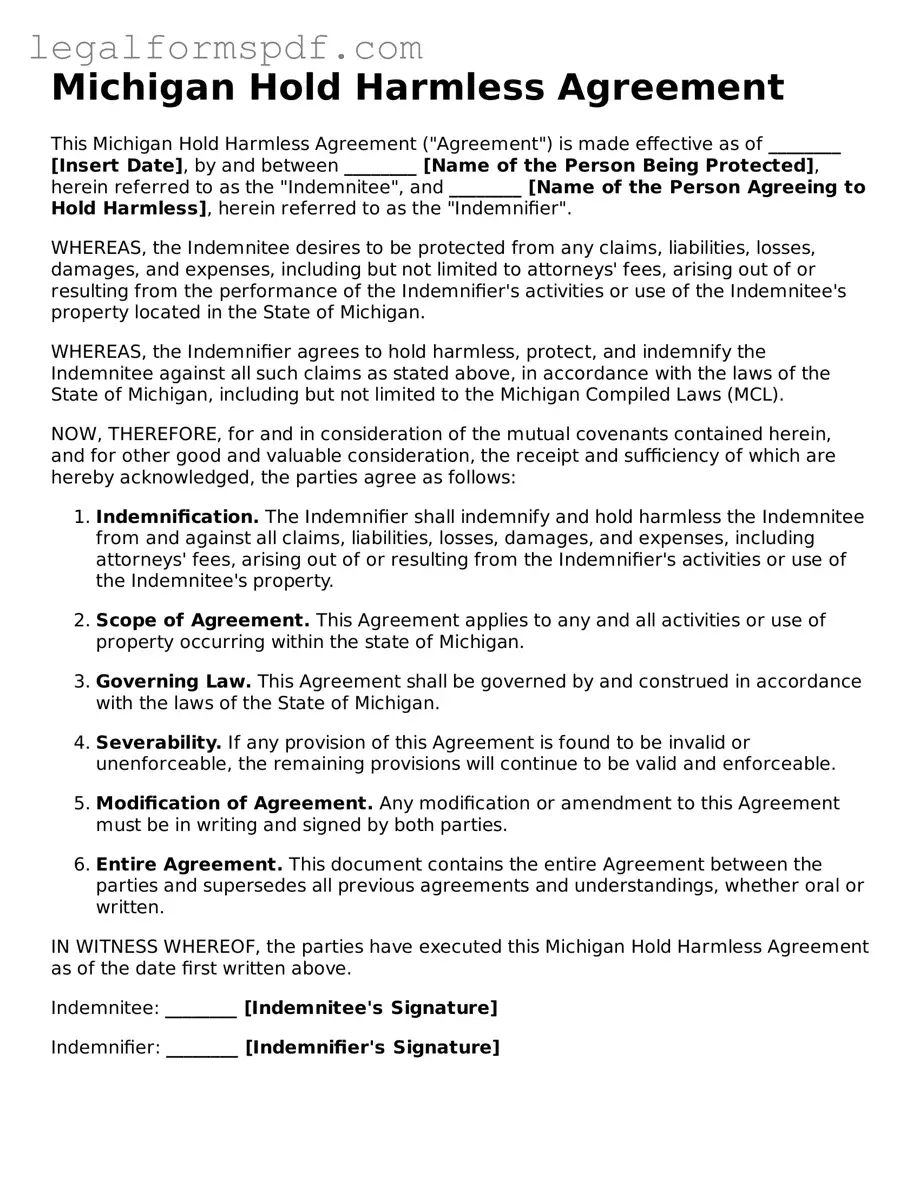Michigan Hold Harmless Agreement
This Michigan Hold Harmless Agreement ("Agreement") is made effective as of ________ [Insert Date], by and between ________ [Name of the Person Being Protected], herein referred to as the "Indemnitee", and ________ [Name of the Person Agreeing to Hold Harmless], herein referred to as the "Indemnifier".
WHEREAS, the Indemnitee desires to be protected from any claims, liabilities, losses, damages, and expenses, including but not limited to attorneys' fees, arising out of or resulting from the performance of the Indemnifier's activities or use of the Indemnitee's property located in the State of Michigan.
WHEREAS, the Indemnifier agrees to hold harmless, protect, and indemnify the Indemnitee against all such claims as stated above, in accordance with the laws of the State of Michigan, including but not limited to the Michigan Compiled Laws (MCL).
NOW, THEREFORE, for and in consideration of the mutual covenants contained herein, and for other good and valuable consideration, the receipt and sufficiency of which are hereby acknowledged, the parties agree as follows:
Indemnification. The Indemnifier shall indemnify and hold harmless the Indemnitee from and against all claims, liabilities, losses, damages, and expenses, including attorneys' fees, arising out of or resulting from the Indemnifier's activities or use of the Indemnitee's property.
Scope of Agreement. This Agreement applies to any and all activities or use of property occurring within the state of Michigan.
Governing Law. This Agreement shall be governed by and construed in accordance with the laws of the State of Michigan.
Severability. If any provision of this Agreement is found to be invalid or unenforceable, the remaining provisions will continue to be valid and enforceable.
Modification of Agreement. Any modification or amendment to this Agreement must be in writing and signed by both parties.
Entire Agreement. This document contains the entire Agreement between the parties and supersedes all previous agreements and understandings, whether oral or written.
IN WITNESS WHEREOF, the parties have executed this Michigan Hold Harmless Agreement as of the date first written above.
Indemnitee: ________ [Indemnitee's Signature]
Indemnifier: ________ [Indemnifier's Signature]
